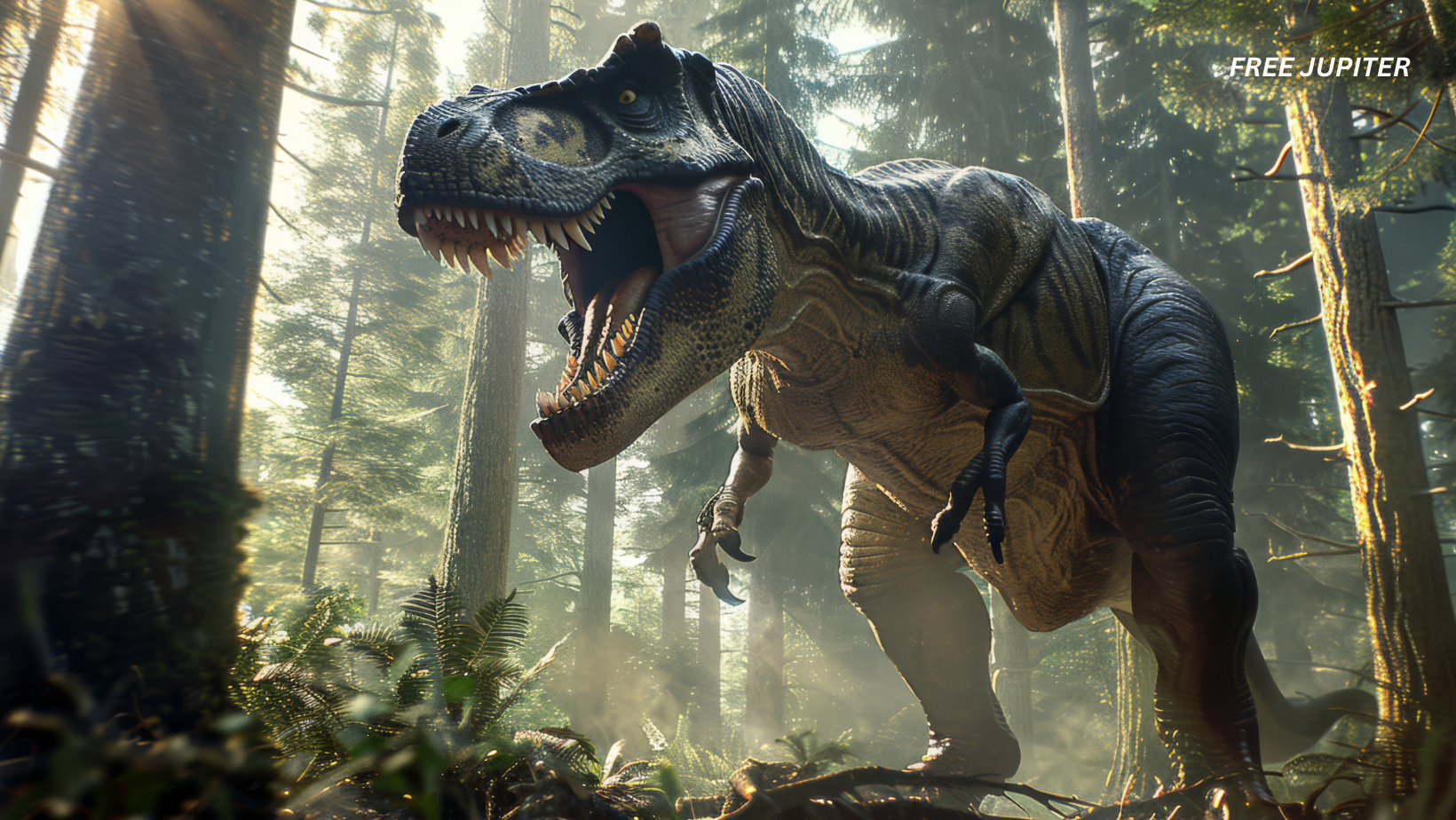Friendly Note: FreeJupiter.com shares general info for curious minds 🌟 Please fact-check all claims—and always check health matters with a professional 💙
Paleontologists have unveiled a fascinating new species of dinosaur housed in a Mongolian museum collection, one that challenges and reshapes the established evolutionary narrative of tyrannosaurs. This discovery sheds fresh light on the origins of the fearsome family that includes the legendary Tyrannosaurus rex.
The fossils in question are two partial skeletons dating back approximately 86 million years. Upon detailed examination, researchers identified these remains as belonging to a previously unknown species, now recognized as the closest known ancestor to all tyrannosaurs.
This group of carnivorous dinosaurs dominated parts of North America and Asia before their extinction at the close of the Cretaceous period.
Dubbed Khankhuuluu mongoliensis—a name meaning “Dragon Prince of Mongolia“—this dinosaur offers a unique glimpse into the evolutionary journey from small, agile hunters to the colossal predators that once ruled prehistoric ecosystems.
Unpacking the Name and Significance
The term “Prince” in the species’ name highlights its status as an early, smaller member of the tyrannosauroid lineage, the broader superfamily of two-legged carnivores that eventually gave rise to giants like T. rex.
According to Professor Darla Zelenitsky, a paleontologist at the University of Calgary, Khankhuuluu represents a crucial transitional form in this evolutionary saga.
Initially, tyrannosauroids were modest in size—nimble creatures that likely lived under the shadow of larger apex predators during the Jurassic period.
Jared Voris, a doctoral student who spearheaded the research alongside Professor Zelenitsky, described these early tyrannosauroids as “small, fleet-footed predators” that occupied a very different ecological niche than their later, more massive descendants.
Khankhuuluu, estimated to have weighed around 750 kilograms, marks a significant evolutionary step toward the massive tyrannosaurs that followed. In comparison, a fully grown T. rex could weigh up to eight times more.
This intermediate size underscores Khankhuuluu’s role as a bridge between the earliest ancestors and the formidable tyrannosaurs that dominated their environments.
Revising the Tyrannosaur Family Tree
The discovery of Khankhuuluu has prompted scientists to rethink the tyrannosaur lineage, effectively rewriting parts of the family tree.
This species exhibits early development of anatomical features that would later become hallmarks of tyrannosaur dominance, particularly in skull structure.
One notable trait is the configuration of its nasal bones, which hint at the evolution of the powerful bite force tyrannosaurs are famous for.
Voris explained that these features laid the groundwork for the mighty jaws capable of crushing bone—a key advantage that allowed later tyrannosaurs to hunt larger prey and maintain their top predator status.
Read more: The Largest Single Organism On Earth Is Slowly Being Eaten
Tracing the Fossils’ Origins and Journey
The two skeletons examined in this study were originally unearthed in Mongolia during the early 1970s. At first, they were classified under the species Alectrosaurus. However, a closer inspection by Voris revealed distinctive tyrannosaur characteristics that warranted recognition as a new species.
Professor Zelenitsky recalls receiving a message from Voris, excitedly suggesting the fossils represented an entirely new discovery. This finding underscores the importance of revisiting and reanalyzing museum collections, where hidden gems often await.
Moreover, the geographic distribution of tyrannosaurs played a vital role in their evolution. During the Late Cretaceous, land bridges connected Siberia and Alaska, allowing tyrannosaurs to migrate between Asia and North America.
This intercontinental movement facilitated the diversification of tyrannosaur species as they adapted to various ecological niches.
Voris elaborated that this back-and-forth migration “pushed the evolution of different tyrannosaur groups” over millions of years, contributing to the rich variety of species within this family.
From Princes to Kings: The Tyrannosaur Legacy
This discovery paints a vivid picture of tyrannosaur evolution, illustrating how these creatures transitioned from relatively modest beginnings to become the apex predators of their time. As Professor Zelenitsky eloquently put it, “before tyrannosaurs became the kings, they were princes.”
Khankhuuluu mongoliensis not only fills a critical gap in our understanding of tyrannosaur ancestry but also enriches the broader story of dinosaur evolution. It reminds us that even the mightiest creatures have humble origins, shaped by millions of years of gradual change and adaptation.
In summary, the unearthing of Khankhuuluu offers a compelling new chapter in paleontology, inviting us to reconsider the evolutionary pathways that led to some of the most iconic predators in Earth’s history.
This species stands as a testament to the dynamic and intricate processes that drive the natural world, captured in fossilized form for scientists and enthusiasts alike to explore.
Read more: Scientists Discover Animals Have a Mysterious ‘Sixth Sense’, Changing Evolutionary Theories
Tyrannosaur Feeding Habits Uncovered: What T. rex Ate in Its Final Moments
Fossil evidence has recently revealed fascinating details about the diet of the Tyrannosaurus rex, one of the most famous members of the tyrannosaur family. Analysis of stomach contents and bite marks on fossilized bones indicates that T. rex preyed upon juvenile dinosaurs, offering a glimpse into its hunting behavior and ecological niche.
This discovery not only highlights the predator’s role at the top of the food chain but also provides clues about its feeding strategies, such as opportunistic hunting and scavenging.
Understanding what T. rex ate helps paleontologists reconstruct the complex food webs that existed during the Late Cretaceous period, enriching our knowledge of prehistoric ecosystems.
The 240-Million-Year-Old ‘Dragon’: Tracing the Roots of Dinosaur Evolution
Long before tyrannosaurs roamed the Earth, their distant ancestors were already beginning to take shape. Recently uncovered fossils dating back approximately 240 million years have been described as a “dragon” of the prehistoric world, representing some of the earliest dinosauriforms.
These ancient reptiles provide essential context for the evolutionary timeline, showing how early dinosaurs and their relatives gradually diversified and adapted over millions of years. By studying these primitive forms, scientists gain insight into the anatomical and ecological changes that eventually led to the rise of dominant groups like tyrannosaurs.
This deep-time perspective is crucial for appreciating the full scope of dinosaur evolution and the environmental challenges these creatures overcame.
Read more: Bizarre Metal From Outside Our World Spotted in Ancient Treasure Stash
Decoding Dinosaur Mass Graves: Insights into Prehistoric Catastrophes and Behavior
Mass graves containing numerous dinosaur skeletons have long intrigued scientists, prompting investigations into the circumstances that caused such concentrated fossil deposits. These sites often reveal evidence of sudden environmental catastrophes—such as floods, volcanic eruptions, or droughts—that led to rapid mass deaths.
Studying these assemblages offers valuable information about dinosaur social behavior, migration patterns, and habitat preferences. Additionally, mass graves can illuminate how different species interacted within their ecosystems and how they responded to environmental stresses.
This research complements discoveries like Khankhuuluu mongoliensis by situating individual species within the broader ecological and geological contexts of their time.










